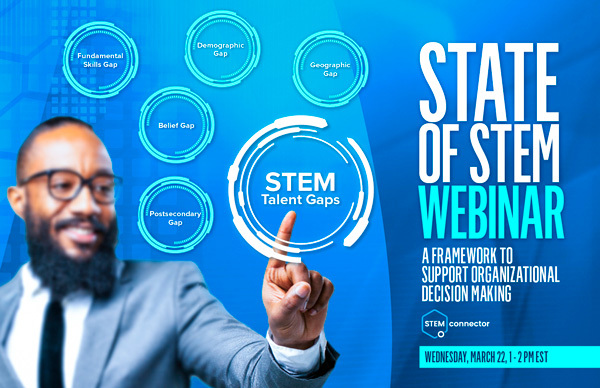State of STEM Webinar: A Framework to Support Organizational Decision Making
In 2018, our seminal body of work was released and defined challenges and created a common language for understanding the STEM ecosystem. This new report was created in response to recent changes in the STEM ecosystem, including new technologies, a global pandemic, and a rapidly changing job market.
“The future of the STEM workforce is anticipated to be vastly different from what we see today,” said Dr. Jo Webber. “It is estimated that 65% of children entering grade school will go into jobs that do not currently exist. Preparing future generations for success in this rapidly changing job market is crucial.”
Our findings: Science and engineering degrees awarded continue to increase at all levels and across many fields. Black, Hispanic, and American Indian or Alaska Native individuals remain underrepresented among S&E degree recipients in almost all fields and degree levels. COVID-19 disrupted the academic plans of many students, especially women and primary caregivers, underrepresented minorities, and those from low-income families.
“There’s not just one STEM talent gap but five talent gaps, and these five gaps don’t sit in isolation.” said Amy Etten. “They are all connected. Building fundamental skills in young people is inherently connected to young peoples’ belief in themselves and their potential in STEM. As we have said over and over, this is a complex problem and it requires a dedicated, coordinated and sustained effort across boardrooms, classrooms and communities.”
